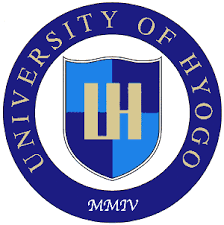What's New!
- 2023/10/1
- Prof. Washizu will chair the 10th International Tribology Conference, Himeji 2027 which will be held in September 19-24, 2027. Please put it in your schedule!
- 2024/2/20
- HW will make an Invited Lecture at CECAM-Lorentz, 21-24 April 2026.
- 2024/10/1
- HW will make an Plenary Lecture at BALTTRIB'2024.
- 2024/9/1
- HW will make an Keynote Lecture at ASIATRIB&CICT2024 (7th Asia International Conference on Tribology & 9th China International Conference on Tribology), Tianjin, China . Our three students will join the symposium too.
- 2022/8/1
- We are looking for papers on 9th International Tribology Conference, Fukuoka 2023 . Prof. Washizu is an organizer of Symposium "Tribology Simulation".
- 2021/12/22
- We are looking for papers on MIPE2022: 2022 JSME-IIP/ASME-ISPS Joint Conference on Micromechatronics for Information and Precision Equipment .
- 2021/11/25
- We are planning to make JAST-STLE Webinar by inviting Dr. Aaron Greco from Argonne, and Dr. John Curry from Sandia national labs.
- 2021/4/1
- The Graduate School of Simulation Studies is changed to The Graduate School of Information Science.
- 2019/8/12
- HW will make an invited presentation at 46th Leeds-Lyon Symposium. Our three students will join the symposium too.
- 2018/10/1
- HW and Prof. Kubo (Tohoku Univ.), Dr. Onodera (Hitachi), Dr. Bai (Kyocera) organize "Tribology simulation" symposium, and many JAST & STLE young researchers organize "JAST & STLE young tribologist symposium", ITC2019 (International Tribology Conference), September 17-21, 2019, Sendai International Center.
- 2018/2/5
- HW and Prof. Hedong Zhang (Nagoya Univ) organize "Advanced Simulation in Science and Engineering" session at 2018 JSME-IIP/ASME-ISPS(MIPE 2018) Joint Conference on Micromechatronics for Information and Precision Equipment , August 29-30, 2018, Hilton San Francisco Financial District, San Francisco, California, USA.
- 2017/12/25
- We organize Special session of Tribology and Interface at MMM2018 which will be held in Oct. 2018 at Osaka Japan. Please join us!
- 2017/5/22
- We made 2 presentations at the STLE 2017 annual meeting at Atlanta U.S.
- 2017/5/22
- Prof. Washizu will join 10th Liquid Matter Conference, Ljubljana, Slovenia (17 July), The 8th Advanced Forum on Tribology 2017, Zhenjiang, China (14 Sep.), World Tribology Congrress 2017, Peking, China (17 Sep.).
- 2017/4/17
- Mr. Maeda (MS student) won a " 2016 Student Award" from the Japanese Society of Tribologists.
- 2017/3/20
- Prof. Washizu made a presentation at 4th International Tribology Symposium of IFToMM (International Federation for the Promotion of Mechanism and Machine Science) (ITS-IFToMM 2017) / 1st K-Tribology International Symposium (K-TIS 2017), Jeju, Korea.
- 2017/1/25
- We made 3 presentations at the Symposium on Surface Science & Nanotechnology -25th Anniversary of SSSJ Kansai- (SSSN-Kansai).
- 2016/11/1
- Dr. Le Van Sang joined our Lab as Research Lecturer.
- 2016/10/1
- Dr. Natsuko Sugimura joined our Lab.
- 2016/10/1
- T. Maeda and Prof. Washizu will join The 4th International Conference on Molecular Simulation in 2016/10/23.
- 2016/5/14
- Prof. Washizu will join 4th Malaysia-Japan Tribology Symposium in 2016/8/25 as an invited speaker.
- 2016/4/10
- We won an award of Tribology Online 2015.
- 2016/1/7
- A Happy new year! Prof. Washizu will join CECAM workshop on Interactions and Transport of Charged Species in Bulk and at Interfaces in 2016/7/4.
- 2015/10/1
- Prof. Washizu will join Pacifichem2015 in 2015/12/20
- 2015/10/1
- The web site is open!
- 2015/10/1
- Prof. Washizu started the lab.
Welcome to Washizu Lab!
Our Materials Simulation Laboratory is located in the Computational Science Center Building on the Kobe Campus for Information Science, University of Hyogo. If you are interested in one of our research projects, please contact us.Flyer of ITC Himeji 2027
 Please use the flyer of 10th International Tribology Conference Himeji 2027.
Please use the flyer of 10th International Tribology Conference Himeji 2027.PDF version
Powerpoint version
2026 Schedule
Prof. Washizu will join CECAM-CSCS Workshop EcoCompute: Building Sustainable Scientific Computing Practices Through Academia-Industry Collaboration, Gordon Research Conference, Tribology Transformative Impact Across Disciplines, and STLE2026, WTC2026...Please watch my online lecture
 My lecture about nano friction is online. If you are interested in the origin of friction, please watch.
FY2024 The 10th I2CNER Seminar Title: “Multiscale Simulation of Friction and Wear”
My lecture about nano friction is online. If you are interested in the origin of friction, please watch.
FY2024 The 10th I2CNER Seminar Title: “Multiscale Simulation of Friction and Wear”
Poster Award & Keynote
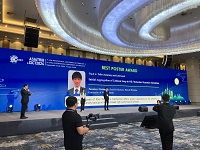 Mr. Nishimura, Ms. Student in our lab won the poster award at
ASIATRIB&CICT2024 (7 th ASIA INTERNATIONAL CONFERENCE ON TRIBOLOGY & 9th CHINA INTERNATIONAL CONFERENCE ON TRIBOLOGY).Congratulations!
Prof. Washizu gave a keynote talk in this conference.
Mr. Nishimura, Ms. Student in our lab won the poster award at
ASIATRIB&CICT2024 (7 th ASIA INTERNATIONAL CONFERENCE ON TRIBOLOGY & 9th CHINA INTERNATIONAL CONFERENCE ON TRIBOLOGY).Congratulations!
Prof. Washizu gave a keynote talk in this conference.
Poster Award
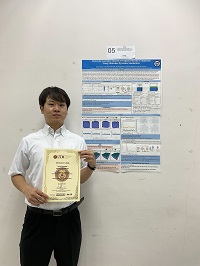 Mr. Hanano, Ms. Student in our lab won the poster award at
6th Malaysia-Japan Tribology Symposium (MJTS) 2024. Congratulations!
We are very happy to join the conference, since 2017,
beyond a heavy typhoon and COVID19.
Mr. Hanano, Ms. Student in our lab won the poster award at
6th Malaysia-Japan Tribology Symposium (MJTS) 2024. Congratulations!
We are very happy to join the conference, since 2017,
beyond a heavy typhoon and COVID19.
Ph. D. Defence
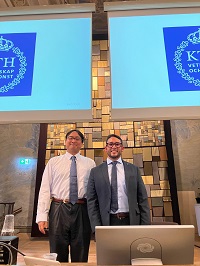 Prof. Washizu joined Ph. D. defence at KTH (Stockholm) and Nagoya Univ. in August 2024.
I am very happy to support the job of young scientists. Congrats!
Prof. Washizu joined Ph. D. defence at KTH (Stockholm) and Nagoya Univ. in August 2024.
I am very happy to support the job of young scientists. Congrats!
We hosted Japan-China Forum
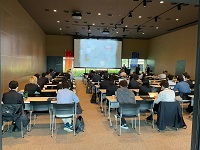 We have organized
The 11th Advanced Forum on Tribology 2024, Himeji at
Arcrea Himeji, Himeji Culture and Convention Center.
We are very happy and glad that this forum after the COVID19 re-started successfully.
We have organized
The 11th Advanced Forum on Tribology 2024, Himeji at
Arcrea Himeji, Himeji Culture and Convention Center.
We are very happy and glad that this forum after the COVID19 re-started successfully.
Organized session
Prof. Washizu and others made organized session on the 9th International Tribology Conference, Fukuoka 2023 . We thank all the speakers joined the session.Invited Talk
Prof. Washizu made invited talk at STLE Virtual Symposium: Digital Tribology. It was a very interesting symposium.Poster award
Mr. Torimoto (MS student) won a "Excellent Poster Award" at K-TRIB2023 (3rd Korea-Tribology International Symposium). Congratulation!New member
Dr. Cheng Tan joined our lab. as Associate professor (Cross Appointment), Mr. Mitsuyoshi Yagyu joine oud lab. as researcher. Dr. Yoshiki Ishii and Dr. Hiraku Oshima got permanent position at Kitasato University as Lecturer, and School of Science, Univ. Hyogo as Associate Professor, respectively.Tue-san got Ph. D.!
Dr. Le Nhu Minh Tue got Ph. D. from our University. Please find two PCCP paers written by him in the publication page. Congratulation!Student award
Mr. Hayama (MS student) won a "Student Award" at MIPE2022, 2022 JSME-IIP/ASME-ISPS Joint International Conference on Micromechatronics for Information and Precision Equipment. Congratulation!New member
Dr. Ryuichi Okamoto joined our lab. Dr.Le Van Sang and Dr. Natsuko Sugimura got permanent position, respectively.Dr. Ishii won award at CCP2021.
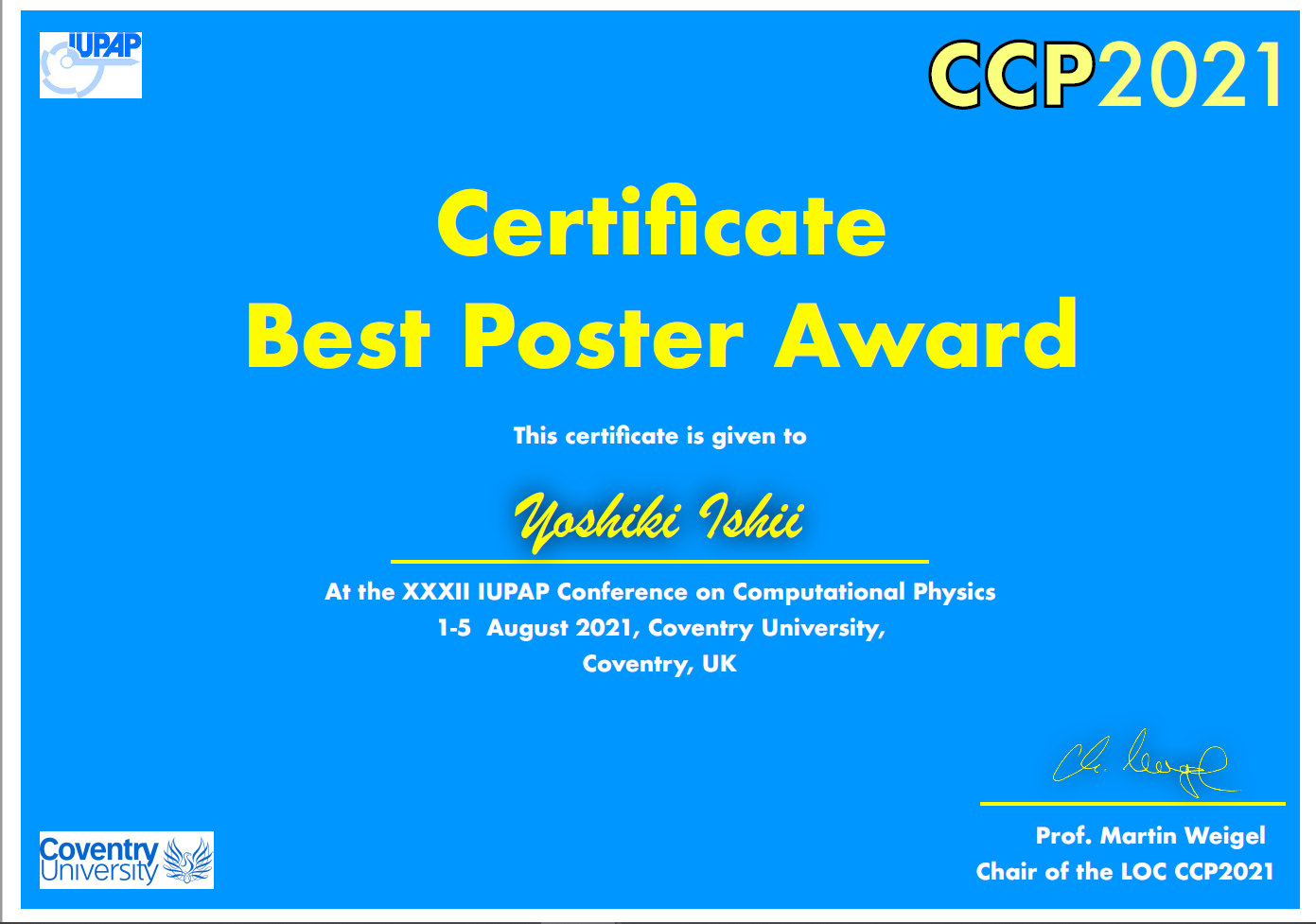 Dr. Ishii made presentation and won the "Best Poster Award" in
CCP2021 (XXXII IUPAP Conference on Computational Physics)at Coventry, UK (but Online). Congratulations!
Dr. Ishii made presentation and won the "Best Poster Award" in
CCP2021 (XXXII IUPAP Conference on Computational Physics)at Coventry, UK (but Online). Congratulations!
Selected as Cover Image
Our figure was selected as cover image of Sci. Adv.Y. Ishii, N. Matubayasi, G. Watanabe, T. Kato, H. Washizu, "Molecular insights on confined water in the nanochannels of self-assembled ionic liquid crystal", Sci. Adv., 7 (31) eabf0669 (2021). pdf.
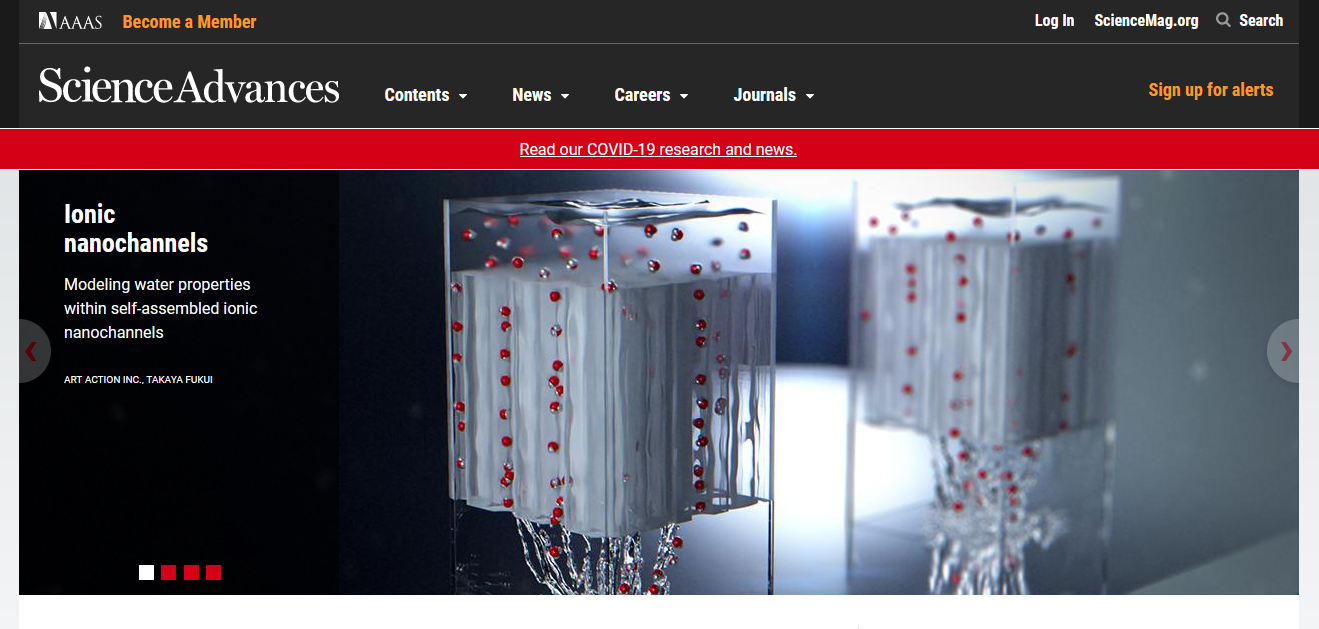
Our research is on STLE journal
Our research of molecular simulatino on Tribology is reviewd in TLT (Tribology & Lubrication Technology June 2021) . Please read "Progress in tribological molecular simulations" in page 42.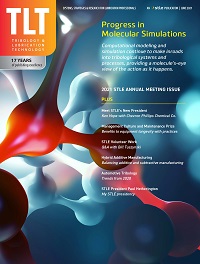
New member
Dr. Kosar Khajeh joined our lab. She came from Iran under the COVID19 situation. Dr. Hiraku Oshima joined our lab. as Associate Professor (Cross Appointment).A new national project
The new national project NEDO Automotive engine started!5 years anniversary, since 2015!
Thanks for all of your support! Dr. Deboprasad Talkudar joined our lab today.A new national project
The new national project NEDO Wind Trubine started!A new national project Aquatic Functional Materials starts!
Japan Society for the Promotion of Science (JSPS) Grant-in-Aid for Scientific Research on Innovative Areas (2019-2023) Aquatic Functional Materials, Creation of New Materials Science for Environment-Friendly and Active Functions starts! Dr. Yoshiki Ishii have joined our lab.!previous information
Recent Publications
Le Van Sang, N. Sugimura, H. Washizu, "Graphene as solid lubricant vertically buried into iron contact surface by annealing for superlubricity", Trib. Intl. 165, 107288 (2022).pdf.The paper uses molecular dynamics simulations to investigate lubrication of graphene for the iron contacts. The graphene sheets are vertically buried into the iron surface by the annealing of melting and cooling it. The friction detection is carried out in various conditions as dependence of friction on the number of the graphene sheets buried on the surface, graphene combined with only the substrate or both of the contacting surfaces, pressure, temperature and sliding velocity. We find that by using this annealing the graphene sheets are tightly held on the contacting surfaces during the sliding. This makes graphene inside the contacts to stably maintain its lubricity. The friction coefficient has the superlow values or the superlubricity one of 0.006.
Y. Ishii*, N. Matubayasi, G. Watanabe, T. Kato*, H. Washizu*, "Molecular insights on confined water in the nanochannels of self-assembled ionic liquid crystal", Sci. Adv., 7 (31) eabf0669 (2021). pdf,
Self-assembled ionic liquid crystals can transport water and ions via the periodic nanochannels, and these materials are promising candidates as water treatment membranes. Molecular insights on the water transport process are, however, less investigated because of computational difficulties of ionic soft matters and the self-assembly. Here we report specific behavior of water molecules in the nanochannels by using the self-consistent modeling combining density functional theory and molecular dynamics and the large-scale molecular dynamics calculation. The simulations clearly provide the one-dimensional (1D) and 3D-interconnected nanochannels of self-assembled columnar and bicontinuous structures, respectively, with the precise mesoscale order observed by x-ray diffraction measurement. Water molecules are then confined inside the nanochannels with the formation of hydrogen bonding network. The quantitative analyses of free energetics and anisotropic diffusivity reveal that, the mesoscale geometry of 1D nanodomain profits the nature of water transport via advantages of dissolution and diffusion mechanisms inside the ionic nanochannels.
Le Van Sang, A. Yano, A. Osaka, N. Sugimura, H. Washizu, "SPH and DEM coupling for influence of hBN lubricant particle on friction of elastic coarse-grained micronscale iron", ASME. J. Tribol. Jan 2022, 144(1): 011901 (10 pages), https://doi.org/10.1115/1.4050711, pdf.
The present study uses the smoothed particle hydrodynamics (SPH) and discrete element method (DEM) coupling to investigate influence of the hexagonal boron nitride (hBN) particles on friction of the elastic coarse-grained micronscale iron. The hBN lubricant particles significantly improve the friction performance of iron in various simulation behaviors. The particle size, the air/water background containing the particles, and its temperature result in reduction of the friction coefficient. The surface mending, the protective film, and the energy dissipation are the main mechanisms related to the friction reduction. Additionally, it is worthy to note that the static friction and the kinetic friction can be clearly observed by this elastic coarse-graining.
N. Yashiro, K. Oohira, N. Sugimura, H. Washizu, "Improvement of discrete element simulation accuracy of steel powder filling behavior by optimization of contact and friction parameters", Tribology Online, 16, 1, 16-23 (2021). pdf.
The filling behavior of Fe-Ni-Mo steel powder for sintered machine parts is simulated using our original DEM (Discrete Element Method) code based on FDPS (Framework for Developing Particle Simulator). The difference between the simulated and experimental apparent densities after self-weight filling is only -6.7%, which is a significantly higher prediction accuracy than the prior study. This result is obtained by only calculating the repulsive force, viscous damping, friction force and gravity using the actual Young's modulus. This is due to using the experimental friction coefficients and the upper limit setting of the distance between the particle surfaces based on the experimental study. This method can be used to simulate the porosity, especially the low density region, in the actual filling process.
Y. Shimizu, T. Kurokawa , H. Arai , H. Washizu, "Higher-Order Structure of Polymer Melt Described by Persistent Homology", Sci. Rep. 11, 2274 (2021). pdf.
The optimal method of the polymer Materials Informatics (MI) has not been developed because the amorphous nature of the higher-order structure affects these properties. We have now tried to develop the polymer MI’s descriptor of the higher-order structure using persistent homology as the topological method. We have experimentally studied the influence of the MD simulation cell size as the higher-order structure of the polymer on its electrical properties important for a soft material sensor or actuator device. The all-atom MD simulation of the polymer has been calculated and the obtained atomic coordinate has been analyzed by the persistent homology. The change in the higher-order structure by different cell size simulations affects the dielectric constant, although these changes are not described by a radial distribution function (RDF). On the other hand, using the 2nd order persistent diagram (PD), it was found that when the cell size is small, the island-shaped distribution become smoother as the cell size increased. There is the same tendency for the condition of change in the monomer ratio, the polymer chain length or temperature. As a result, the persistent homology may express the higher-order structure generated by the MD simulation as a descriptor of the polymer MI.
Le Van Sang*, N. Sugimura, H. Washizu*, "Influence of the alumina ceramic coating on friction and stability of the iron contacts", ASME. J. Tribol. 143(3): 031402 (2021). pdf,
The study focuses on monitoring influence of the alumina coatings on friction and stability of the microscale iron contacts by the smoothed particle hydrodynamics. The obtained results show a better stability and a higher value of the friction coefficient of the coated surface compared to the uncoated one. This study also supposes that in concern of stability of the surface the coating should be done with only the substrate surface accompanied with the roughness of the coating layer. The proportion of the coated particles is found to be strongly resulting in the friction properties and the roughness of the coating layer also slightly results in those. The surface reaches the most stability at the proportion of around 70%.
